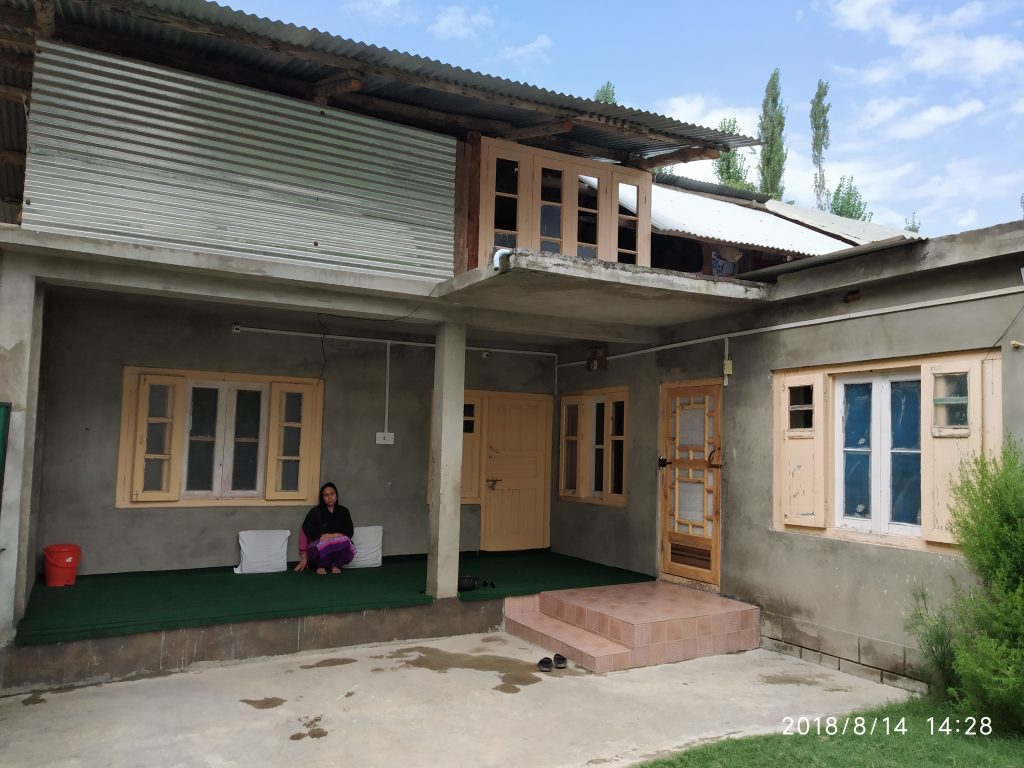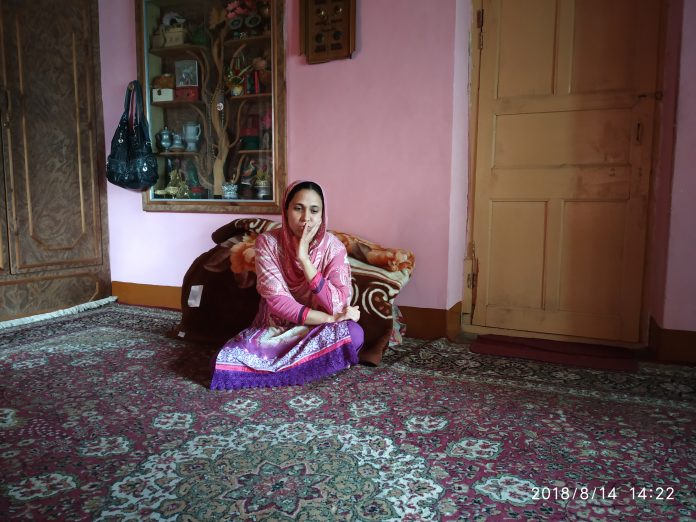By TCN Reporter, TwoCircles.net
Khrew:- August 11 2016, was the last time Yasmeena saw her husband Shabir Ahmad. She was packing her bags to go to her mother’s house at Tral, in South Kashmir for some time. Had she any inkling that their meeting would be their last, she wouldn’t have left her husband at any cost.
In 2016, when Kashmir was burning after the death of top rebel Commander Burhan Wani, protest and clashes between Indian forces and civilians took place in every nook and corner of the Valley. The Indian Army reportedly came under attack from heavy stone pelting in Shaar, Khrew area of South Kashmir on August 16. In the intervening night of 17th and 18th August, the army, according to villagers, in a fit of rage barged into the residential houses of the locals and went berserk. Among them was the residential house of one Wali Mohammad.
According to Wali Mohammad, Army vandalised their property and then picked up his sons Shabir Ahmad, a college lecturer, and his brother Zahoor Ahmad. On the next day, Shabir’s corpse arrived which evidently appeared as though it had been tortured earlier in a local hospital.
The killing of Shabir added fuel to the fire in Kashmir, which had witnessed 71 deaths in just the first 40 days of the mass uprising.
“When I saw his dead body, it was bruised and had clear torture marks; I still remember his body on that wooden plank. My world has turned upside-down, I am a dead soul,” says Yasmeena, Shabir’s wife.
Yasmina lives with her parents at Tral. She says she lives for her 3 years old son, Muhaib who was just 15 months old when his father was killed.
“I am living for my son, otherwise I have no reason to be alive, I have lost my best friend in my husband”, she says as tears roll down her cheeks.
Back to Shabir’s resident in Khrew, his sister, Masarat is sitting at the veranda of the single-storied house. She still remembers the day when the army came “with hammers, sticks and guns”, and barged into her house.

“It was around 10:30 PM when we had finished our dinner and were preparing for bed, my brother Shabir was in his room, preparing for the NET (National Eligibility Test), my other brother Zahoor was also in his room. I still remember the Army men broke our main gate first and then the front door, and entered our house. They then the dragged out both of my brothers under a shower of blows,” She recalls.
“That night it was Kohram (Chaos) in our house. They tried to lock me into a room but I managed to run outside,” she says.
Next day, some villagers found Zahoor on the side of the road. He was beaten up to a pulp and have severe injuries-but alive. His brother Shabir was still missing.
“When I saw Zahoor, he wasn’t even in a position to swallow a drop of water. I dipped a piece of cotton in a glass of water and tried to give it to him, we somehow managed to shift him to the hospital but there were no reports of Shabir,” recalls Masrat.
Not only these two brothers, but the army rounded up at least 50 other youth that night, according to Masrat.
The next day the Mangoo family received the dead body of their son; the body bore visible torture marks. A First Information Report was filed at the Pampore police station the next day.
The Army at the time said the raid was not sanctioned, and also later promised to conduct an investigation. The then 15 Corps commander Lt General Satish Dua had called it “regrettable” and promised an immediate investigation.
There was a sense of uproar, and then Chief Minister of the state, Mehbooba Mufti promised stern action against Army personnel found guilty. She announced in the J&K assembly that a J&K Police SIT (Special Investigating Team) would probe the incident.
After some days, the SIT of Jammu and Kashmir Police was formed. The SIT after completing the investigation sought sanction to prosecute 23 Army men for the death of lecturer. The probe, according to a report held 23 Army personnel responsible for the act, and sanction was been sought for their prosecution.
The report further reads that the post-mortem was conducted and the viscera/X-ray films “from the deceased were sent to FSL Srinagar/Department of Radio Diagnosis, Government Medical College, Srinagar for analysis and expert opinion”.
“Statements of various persons who were found acquainted with the facts of the matter were recorded… Army personnel belonging to 50 RR (Rashtriya Rifles) were found responsible for the death of son (Shabir Ahmad Mangoo) of the complainant (Wali Mohammad Mangoo) and injuries to other persons,” the probe concluded.
“The nominal roll of Army officers/officials along with in charge party was obtained and the said officers/officials were summoned for necessary questioning and the information/replies were recorded,” it stated. The investigation concluded that “the second case (FIR filed on the basis of the written complaint of the Major, 50 RR) could not be established.”
“facts and evidence which came to fore during the investigation against 23 Army personnel…has been sent for obtaining sanction from the competent authority under the provisions of Armed Forces (J&K) Special Powers Act for launching prosecution against the said Army personnel,” the report stated.
Two years have passed the family is still waiting for justice that seems to be elusive.
Wali Mohammed Mangoo, the father of the slain lecturer, says, “When my enemy is my Judge how should I expect justice?”
He says he has lost hope. “When justice was denied to thousands of Kashmiris, why should I expect anything from India,” he asks.


